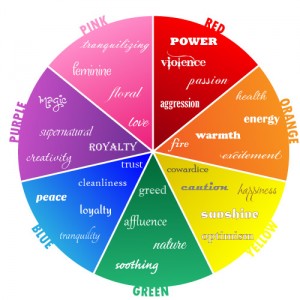by Naomi L. | May 29, 2015 | Flash Fiction, J.C. Wolfe's Writing |
My heart stopped when my bedroom door began to open.
My computer had frozen, now of all times, and my mother was going to see all the dirty pictures I’d been looking up for the last hour!
But just as she stepped into the room, my screen suddenly shut off.
I turned around to see my cat standing on the computer plug, staring back at me with a look in his eyes that read: You owe me.
He’s going to feast on cat treats for the rest of his life.
Based on a superhero-themed writing prompt from Writer’s Carnival: Unlikely Hero.
You are saved from an embarrassing situation by the unlikeliest of heroes. Write a quick scene, no more than five sentences, describing this.
I hope you enjoy what I’ve written. Thanks for reading!
by Naomi L. | May 27, 2015 | Blog, Creative Writing, What If? Writing Prompts |
So it seems my ultra busy grad school schedule is catching up with me yet again, so for now, I’m afraid I’ll have to pad over my creative writing topics with some “What If?” Writing Prompts at least every other week. My apologies for not being able to bring you more fulfilling content for a while, but I hope you’ll find these posts entertaining nonetheless.
Since I enjoyed writing for the Earth Day post so much, I figured I’d try my hand at coming up with another batch of nature-themed prompts. See what sorts of environmental stories you can create based on these ideas! Enjoy!
 What if… the world ran entirely on renewable energy sources?
What if… the world ran entirely on renewable energy sources?
What if… a massive space object were to black out the sun?
What if… there were ecosystems completely uninfluenced by human actions?
What if… species could evolve fast enough to keep up with the accelerated environmental changes caused by people?
What if… humans were an endangered species?
Have fun spinning your own environmental tales!
If you have any “What If?” writing prompt suggestions (for any theme), please feel free to share them in the comments below. Ideas I like may be featured in future “What If?” posts, with full credit and a link to your blog (if you have one)! Also, if you’ve written a piece based on an idea you’ve found here, be sure to link back to the respective “What If?” post. I would love to see what you’ve done with the prompt! Thank you!
by Naomi L. | May 25, 2015 | Blog, Word of the Week |
Word: garrulous
Pronunciation: GA-r(y)ə-ləs
Part of Speech: adjective
Definition: excessively talkative, especially on trivial matters
Source: Oxford Dictionaries
This one’s another word I picked off the vocabulary flashcard stack. Though I haven’t used it much myself yet, I like the word “garrulous” for the way it sounds. It’s kind of a poetic way to define someone who talks too much, which I’m sure we all could have used at least once in our lives. Such “garrulous” acquaintances make great inspiration for chatty characters, don’t you think?
A “garrulous” person is someone who talks in excess, usually about matters of little importance. The word comes from the Latin adjective garrulus, meaning “talkative”. This adjective stems from the verb garrire, which means “to chatter” or “to prattle”.
The word “garrulous” is similar to another adjective I’ve featured in my vocabulary segment before: “loquacious“. The difference between these adjectives is that the excessive talkativeness in “loquacious” is implied, whereas in “garrulous” it’s explicit. Either word is good for defining characters who talk too much, so it’s up to you to decide how apparent you want their loquacity to be. If you know people who can’t stop chattering, then you should have no trouble finding inspiration for a few “garrulous” characters for your stories. Good luck!
What are your thoughts on this word? Any suggestions for future “Word of the Week” featured words?
by Naomi L. | May 22, 2015 | Flash Fiction, J.C. Wolfe's Writing |
“Remember the old days, when people used to cheer ‘Strongman!’ every time I threw a car at a villain and stopped him cold?”
“Now you’d get sued ’cause they just finished paying it off.”
“What about you, Lightning Girl? Your super speed used to be the talk of the town! What happened?”
“There’s nowhere to run anymore! A new building pops up in this city every month; the longest stretch of road anywhere is two blocks. That’s barely half a step!”
“At least invisibility still counts for something, right?”
“Hardly, Invisi-Boy! Kids today are so glued to their phones, they wouldn’t see a whale if it dropped out of the sky riding an army tank on fire!”
“What happened to the good old days?”
“Those days are long gone, my friend. Long gone indeed.”
Based on a superhero-themed writing prompt from Writer’s Carnival: Goooood Old Days!
You’re in the superhero old folks home. Write a banter piece about the “Good Old Days”. Dialogue only, no more than 12 lines.
I hope you enjoy what I’ve written. Thanks for reading!
by Naomi L. | May 20, 2015 | Blog, Creative Writing, Featured |
I love colors. I’ll say it over and over again: I love colors! They’re beautiful. They’re stimulating. Sometimes I even think they’re magical. I love everything about them, from the power they have to evoke emotions to the subtle yet distinct differences they make in a work of art. But my favorite thing about colors is their symbolism, the way they can be used to hide secrets and hint at details of a bigger picture without drawing focus away from the story at hand.
It’s simple enough to use colors in visual art, but what about in writing? Challenging as it may seem, I believe it is possible to create symbolism with words, such as when describing color schemes of character outfits and settings. Color symbolism has fascinated me for as long as I can remember, and while it would take an entire book (or series of books) to get into it all, I’d like to at least scratch the surface today with some of the basics I’ve picked up throughout my experience researching and implementing meaningful colors in my stories. You may want to consider these tips the next time you set a scene; they can help add a vivid new layer to your story! Enjoy!
 Red – Red is a bold and passionate color, often symbolizing such strong ideas and images as courage, fire, power, and violence. It’s a color that demands attention, which is why it’s commonly used to signify danger. Use red for passionate or aggressive characters, or for any sort of intense scene, whether it’s the heat of love or the violence of war.
Red – Red is a bold and passionate color, often symbolizing such strong ideas and images as courage, fire, power, and violence. It’s a color that demands attention, which is why it’s commonly used to signify danger. Use red for passionate or aggressive characters, or for any sort of intense scene, whether it’s the heat of love or the violence of war.
 Orange – Not quite passionate and not quite joyful, orange is a middle ground between red and yellow. It symbolizes energy and creativity, and is used in psychology to stimulate enthusiasm and determination. Use orange for adventurous or creative characters, or when you want to paint some vibrant warmth into a scene.
Orange – Not quite passionate and not quite joyful, orange is a middle ground between red and yellow. It symbolizes energy and creativity, and is used in psychology to stimulate enthusiasm and determination. Use orange for adventurous or creative characters, or when you want to paint some vibrant warmth into a scene.
 Yellow – Yellow is the two-sided coin of colors. On the one hand, it symbolizes happiness, optimism, sunshine, and friendship. On the other hand, it can also stand for cowardice, illness, hazard, and deceit. Golden shades represent wealth and luxury. Use yellow when you want to add hints of joy or caution to a scene. For the best effect, I recommend using yellow ambiguously, such as for characters who seem jubilant and optimistic on the outside but who are fearful or deceitful on the inside.
Yellow – Yellow is the two-sided coin of colors. On the one hand, it symbolizes happiness, optimism, sunshine, and friendship. On the other hand, it can also stand for cowardice, illness, hazard, and deceit. Golden shades represent wealth and luxury. Use yellow when you want to add hints of joy or caution to a scene. For the best effect, I recommend using yellow ambiguously, such as for characters who seem jubilant and optimistic on the outside but who are fearful or deceitful on the inside.
 Green – Think of green and you’re sure to picture beautiful scenes of nature, complete with lush vegetation as far as the eye can see. Indeed, green is the color of the environment, and it represents such ideas as youth, fertility, health, and rebirth. Abstractly, it also symbolizes jealousy and good luck. Use green for characters associated with natural themes such as environmentalism or the practice of healing, or to hint at fortune or envy in relationships.
Green – Think of green and you’re sure to picture beautiful scenes of nature, complete with lush vegetation as far as the eye can see. Indeed, green is the color of the environment, and it represents such ideas as youth, fertility, health, and rebirth. Abstractly, it also symbolizes jealousy and good luck. Use green for characters associated with natural themes such as environmentalism or the practice of healing, or to hint at fortune or envy in relationships.
 Blue – Blue is my favorite color because it represents all my favorite things. It’s a color that symbolizes intelligence, tranquility, trust, and loyalty. In nature, it’s associated with the sky and the sea, and different shades from turquoise to navy can be used to signify sophistication, knowledge, and integrity. Use blue for characters who are more intellectual than emotional, and for settings fitting an atmosphere of calm and authority.
Blue – Blue is my favorite color because it represents all my favorite things. It’s a color that symbolizes intelligence, tranquility, trust, and loyalty. In nature, it’s associated with the sky and the sea, and different shades from turquoise to navy can be used to signify sophistication, knowledge, and integrity. Use blue for characters who are more intellectual than emotional, and for settings fitting an atmosphere of calm and authority.
 Purple – Purple is the color of royalty, and has long represented such themes as nobility, wisdom, honor, and extravagance. Being a relatively rare color in nature, it is often associated with mystery and magic. Lighter shades such as lavender also convey grace and elegance. Use purple as a motif for regal or arrogant characters, mysterious settings, and storylines brimming with fantasy.
Purple – Purple is the color of royalty, and has long represented such themes as nobility, wisdom, honor, and extravagance. Being a relatively rare color in nature, it is often associated with mystery and magic. Lighter shades such as lavender also convey grace and elegance. Use purple as a motif for regal or arrogant characters, mysterious settings, and storylines brimming with fantasy.
 Pink – A soft complement to the bold red, pink is the color that most famously signifies love and romance. Strongly associated with femininity, it represents tenderness, caring, and acceptance. I myself tend to associate the color pink with flowers. Use pink to add a soothing or feminine quality to a scene, or to signify elements of a romantic subplot.
Pink – A soft complement to the bold red, pink is the color that most famously signifies love and romance. Strongly associated with femininity, it represents tenderness, caring, and acceptance. I myself tend to associate the color pink with flowers. Use pink to add a soothing or feminine quality to a scene, or to signify elements of a romantic subplot.
 Brown – Brown is well known as an earth tone, and as such tends to represent stability. Common ideas associated with the color brown include simplicity, comfort, and endurance. Use brown when you want to convey a sense of plainness or tenacity in a scene without having to resort to the blatant dullness of gray.
Brown – Brown is well known as an earth tone, and as such tends to represent stability. Common ideas associated with the color brown include simplicity, comfort, and endurance. Use brown when you want to convey a sense of plainness or tenacity in a scene without having to resort to the blatant dullness of gray.
 Gray – The dull middle ground between white and black, gray is most commonly associated with boredom and depression. On the positive side, it also stands for security, modesty, practicality, and reliability. Use gray for conservative characters or when you want to create a colorless air for a particular setting.
Gray – The dull middle ground between white and black, gray is most commonly associated with boredom and depression. On the positive side, it also stands for security, modesty, practicality, and reliability. Use gray for conservative characters or when you want to create a colorless air for a particular setting.
 White – White is the international color of peace, and is often regarded as a symbol of light, purity, and faith. Some even go as far as to associate it with perfection. Note that white takes on a different meaning in Eastern cultures, where it’s associated with death and mourning. Use white when you want to convey innocence in your characters and cleanliness in your settings, or when you want to create strong religious symbolism in your scenes.
White – White is the international color of peace, and is often regarded as a symbol of light, purity, and faith. Some even go as far as to associate it with perfection. Note that white takes on a different meaning in Eastern cultures, where it’s associated with death and mourning. Use white when you want to convey innocence in your characters and cleanliness in your settings, or when you want to create strong religious symbolism in your scenes.
 Black – The exact opposite of white, black represents everything that its counterpart doesn’t. Darkness, evil, and death are themes commonly associated with black, but it can also stand for austerity, formality, style, and sexuality. Arguably the most powerful color of all, black has a long history of symbolizing strongly opposed ideas on the spectrum of good and evil. Use black to convey depth in your characters or to add dark themes to a scene. For best results, combine it with other colors to create interesting contrasts of ideas in your stories.
Black – The exact opposite of white, black represents everything that its counterpart doesn’t. Darkness, evil, and death are themes commonly associated with black, but it can also stand for austerity, formality, style, and sexuality. Arguably the most powerful color of all, black has a long history of symbolizing strongly opposed ideas on the spectrum of good and evil. Use black to convey depth in your characters or to add dark themes to a scene. For best results, combine it with other colors to create interesting contrasts of ideas in your stories.
I hope you’ve enjoyed exploring the symbolism of color with me, and that you’ve picked up a few hints along the way! Have fun experimenting with the colors in your stories! Good luck, and thanks for reading!
Do you use color symbolism in your stories? Which colors are your favorites?
References and Further Reading

 What if… the world ran entirely on renewable energy sources?
What if… the world ran entirely on renewable energy sources?
 Red
Red Orange
Orange Yellow
Yellow Green
Green Blue
Blue Purple
Purple Pink
Pink Brown
Brown Gray
Gray White
White Black
Black
Recent Comments